Want to learn to pull flowers in coffee? From fusion to injection guidance, slow motion decomposition!
For professional baristas, please follow the coffee workshop (Wechat official account cafe_style)
Father's Day is coming, baristas and "fake" baristas, are you ready for presents?
What are you talking about? Too poor to buy gifts?
No, a gift from the heart doesn't cost much.
What kind of Father's Day gift can be considered attentively? Pull the flowers and pull the heart!
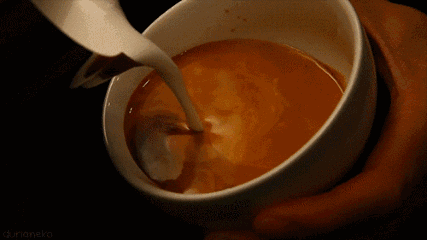
What are you talking about? You can't look that good?
It doesn't look good to pull such a simple operation? Then you have to make up for it.
The process of making a cup of lace coffee can be seen as two stages: the first stage is "fusion", and the second stage is "injection molding", which is what we call "lace".
First of all, let's focus on "integration."
1. Cup height: refers to the distance between the milk jar and the coffee cup

The distance between the normal milk jar and the coffee cup is about 5ml 10cm (reference), which should be the distance between the mouth of the bottle and the coffee liquid level. Each person is different on this point, there is no exactly the same height and distance, there is no fixed height, but the purpose is only one point, that is, to fully integrate milk foam and coffee, because the density of milk foam is small and light, when we merge, we often choose to increase the distance between the milk tank and the coffee surface to avoid destroying the cleanliness and color of the oil. So we have to understand that the thicker the bubble, the higher the distance (impact), on the contrary, the thinner the bubble, the lower the distance.
2. Milk flow size: refers to the thickness of the milk flow when the milk in the milk jar is poured into the coffee cup
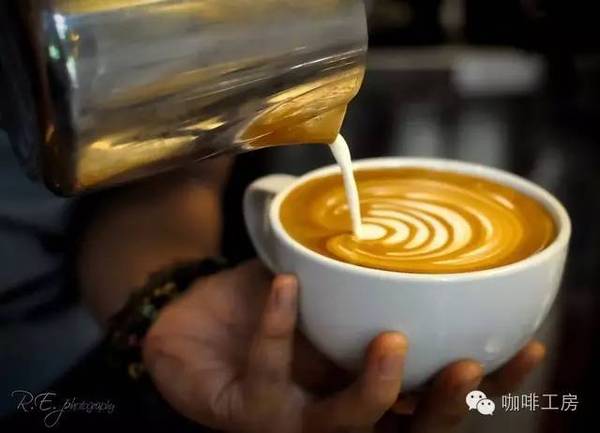
The normal reference value is that the milk flow is a little thinner under constant conditions. The purpose of the milk flow size is to ensure that the cleanness and color of the oil will not be destroyed while fully merging the milk foam and coffee. The coarse milk flow will have a greater impact and will have a certain chance of breaking into the bottom of the cup to produce turbulence. Therefore, we will generally choose a finer milk flow to carry on the fusion. If we are more flexible, the size of the milk flow should match the quality of the milk foam. For example, if the milk foam is thicker, we need higher distance and finer milk flow, on the contrary, we can choose micro-coarse milk flow and closer milk flow to merge.
3. Fusion techniques: fusion techniques are roughly divided into three types: one-word fusion method, circle fusion method, fixed-point fusion method.

These techniques do not have a great impact on flowering mobility: let's start with the difference between the three methods.
One-word fusion method: that is, to remove fusion by swinging left and right on a line, this method greatly reduces the area of damaged oil and achieves the purpose of fusion.
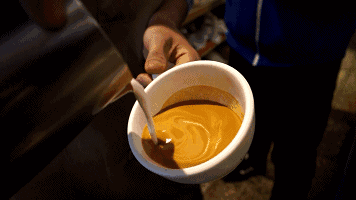
Circle fusion method: that is, turn a circle to fusion, this fusion method to a large extent to move on the oil surface, to achieve the purpose of fusion.
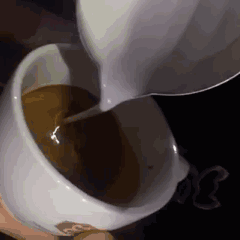
Fixed-point fusion method: fusion is carried out at a point, this method hardly destroys the surface cleanliness of grease, and achieves the purpose of fusion.
There is a fake motion picture here. Gif
The three fusion methods have their own advantages and disadvantages, and the circle fusion method (that is, large area de-fusion) is the best in terms of fusion state and uniformity. The reason is very simple, the larger the fusion area, the easier it is to fully integrate milk foam and coffee. Fixed-point fusion and one-word fusion requires super grease and very good milk foam. Therefore, it is recommended to circle a large area to merge.

4. Fusion quantity: refers to how many milk bubbles are fused into the cup, and the amount of fusion liquid mainly affects the fluidity of the liquid surface during flower drawing (the following example assumes that grease, milk foam and fusion techniques are consistent).
The process of fusion is actually the process of pouring milk into Espresso:
The amount of fusion liquid = the number of milk bubbles poured in = the fluidity strength of the liquid surface.
Less fusion liquid (that is, less milk bubbles poured in), less bubbles on the liquid surface and less resistance, so the fluidity is high.
If there is more fusion liquid (that is, more milk bubbles are poured into it), the more bubbles on the liquid surface, the greater the resistance, so the fluidity is low.
Therefore, the amount of the fusion liquid is different, and the fluidity of the liquid surface is also different.

So, how much should be fused? This needs to look at the specific pattern.
In terms of flower drawing style, there are two main schools:
Japanese style: the main feature of the pattern is that it covers a large area, and it is conceivable that a large range of patterns need a liquid surface with high mobility, so there is usually less fusion of Japanese patterns.
Korean style: the main feature of the pattern is that the pattern is neat and symmetrical, and the pattern with high symmetry needs a liquid surface with low mobility. So there are usually a lot of Korean pattern fusion weight.
So when we pull flowers, we choose the appropriate amount of fusion (liquidity) according to the effect we want. One of my favorite words about integration is to think of integration as building and laying foundations. The more the fusion, the more stable the foundation. The less the fusion, the stronger the mobility of the foundation.

After the fusion, it's time to pull flowers.
Injection molding
1. Blooming point: refers to the point from which the liquid surface is used to shake the flower, and the flowering point determines the final position of the pattern in the cup. The flowering point of the heart-shaped flower is usually in the middle of the distance between the center of the liquid surface and the cup wall.

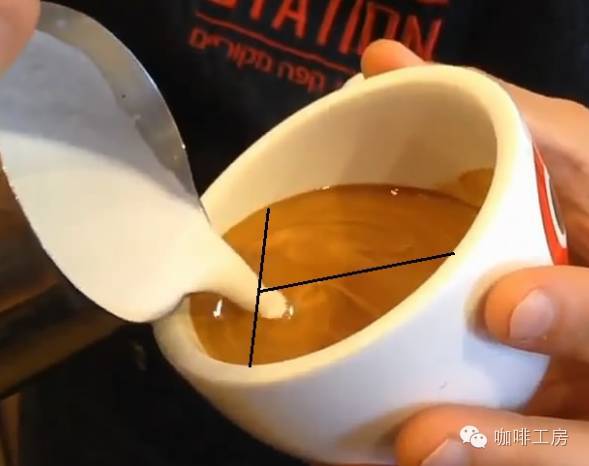
two。 The distance between the milk tank and the liquid surface: after finding the right blooming point, the next step is to shake and draw the shape. At this time, the height of the milk tank must be lowered so that the tip of the milk tank touches the liquid surface closely. The closer the distance is, the easier it is to draw a picture. If the distance is too high, there will be a greater impact will not show the picture.

3. Dithering method: many beginners have a misunderstanding about the shaking of the milk tank. The correct way to shake the milk tank is that the milk tank swings evenly on the axis of the handle like a pendulum rather than the translation of the whole milk tank. Nor is the milk tank shaking its head from side to side. The heart-shaped pattern should be swung at a fixed point, that is, do not move forward or backward when swinging.

4. The size of the milk flow when shaking the flower: when the milk flow is relatively larger, the heart is fuller, more round and the lines are more obvious. If the milk flow is too small when the milk flow is too small, the heart will be flatter, smaller or even more likely to be crooked. So the larger the milk flow, the larger the milk flow. (the larger the milk flow, the more curved the milk comes out of the cup, and the smaller the milk flow is, the more vertically it stays when it comes out of the cup.

5. Ending: ending means that after 99% of the pattern production is completed, there is only 1% left at the end of the pattern production. Although there is only 1%, many beginners either spill coffee into the cup or cause the whole heart to become deformed and lengthened at the final closing moment. At the end, it must be steady and accurate. "steady" means to pull up the milk tank, and at the same time, the hand should be steady and do not let the milk flow shake and move. "accurate" means to find the right dividing line in the middle of the heart, raise the milk tank to keep the fine milk flow straight and pull it to the end!
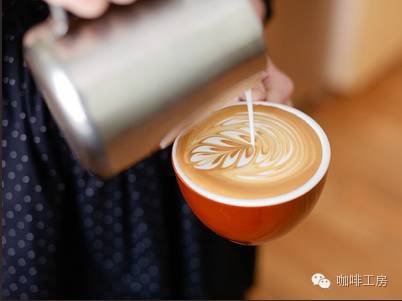
It is important to note that at the beginning, the flow rate is high and low-- hit the center of the cup-- the cup is half full-- drop the milk tank-- keep the center, medium flow-- shake out the foam-- pile up the foam-- slowly push forward, pause-- raise the vat-- lower the velocity-- cut straight ahead!
It is worth mentioning that many students do not pay attention to the final molding angle, resulting in the final pattern is crooked, for example:

When producing, the cup ear is usually on the right-hand side of the guest (of course, we don't rule out the habit of holding the cup with the left hand). So for customers to see the flower correctly, the pattern should be in the middle of the cup, surrounded by the Klima color of about 1cm, forming a symmetrical center.

The following teaches the mind method of symmetrical centering!
Hammer grip cylinder method:

Hold the cylinder with pliers:

Of course, there is also a more awesome way to hold the cylinder:

At the end of the text explanation, let's learn some video references:
All right, class, the editor can only help you so far.
Important Notice :
前街咖啡 FrontStreet Coffee has moved to new addredd:
FrontStreet Coffee Address: 315,Donghua East Road,GuangZhou
Tel:020 38364473
- Prev
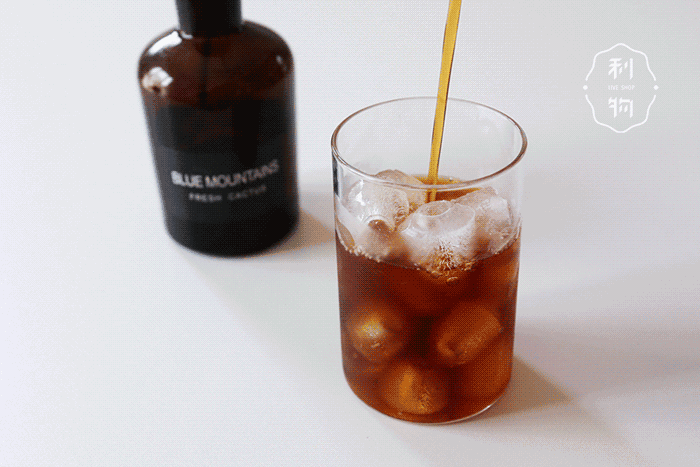
Cold Brew Coffee | easy DIY for cold extract coffee making guide
For the exchange of professional baristas, please follow the coffee workshop (Wechat official account cafe_style) Cold Brew Coffee / cold coffee, which seems to have become popular in China since last summer. Ice taste, taste more mild and balanced, the practice is surprisingly simple, today to talk about it! What is the point of charm? Catalogue 1. What is Cold Brew Coffee / cold extract
- Next
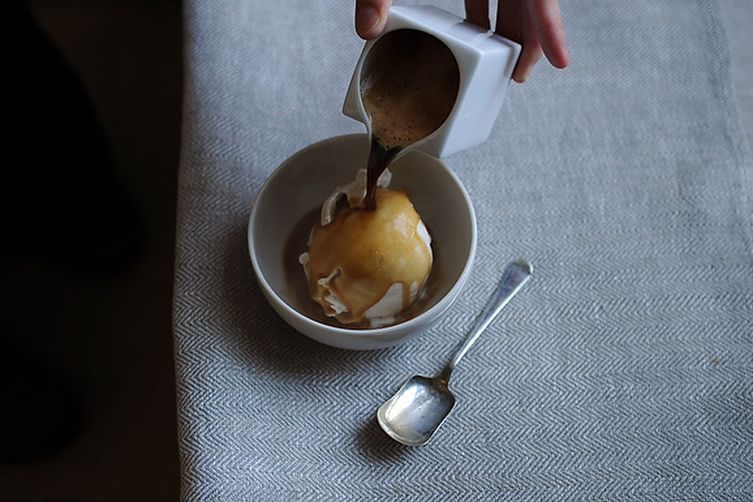
Suffocating delicious Italian dessert A Fu Jiadu Coffee Affogato is how to do detailed tutorial steps diagram
Exchange of professional baristas Please follow the coffee workshop (Wechat official account cafe_style) A shot espresso is poured on a ball of Vanilla Ice Cream, this is Affogato Afjiado, the source is no longer available. With a beautiful name, Afujiaduo makes people curious about aff.
Related
- What is the meaning of lactic acid fermentation with coffee bean treatment?
- How to judge the state of foam by sound?
- How does the latte pull out the unicorn pattern? Come to get for a little trick to improve the flower pull!
- Will flower pulling affect the taste of the latte?
- Do you know the history of coffee?
- The difference between honey treatment and sun washing what is raisin honey treatment?
- What kind of milk can a novice use to make coffee foam to keep the foam longer? The correct method and skills of milking tutorial sharing
- Why do washed coffee beans taste sour? Flavor characteristics of washed Coffee
- Introduction to the skill of how to practice the size and height of water injection around the circle of hand-brewed coffee
- How do beginners practice coffee flower drawing from scratch?

